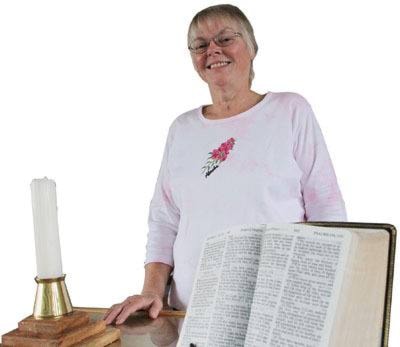It's been 50 years since 100 Mile House United Church opened its doors on Dogwood Crescent, but even before that time, there was a congregation opening its arms to the people of this community.
The church building was established in 1960, but for several years prior, services, led by travelling clergy, were held in the homes of people living in Lone Butte, Forest Grove, Bridge Lake and Lac la Hache.
At one time, an old building was dragged into Lone Butte for use as a church.
By the summer of 1957, Rev. Al McNeil, who would become the church's first permanent minister, was settled at the Lac la Hache Youth Bible Camp where he performed services every Sunday. When September rolled around, McNeil was holding regular services for his congregation in the 100 Mile Community Hall, along with Sunday school for up to 50 youngsters.
100 Mile resident Carla Karikstad was an original congregation member and attended many of those services.
"The hall was used by everyone in the community and sometimes the morning after a Saturday night dance, it wasn't such a pretty sight," she says.
Al's wife, Leafa McNeil, was musically gifted and instigated both the junior and senior choirs, which went on to win many awards at music festivals. Because there was no permanent church in the early years, the choirs practised in the McNeils' Cedar Avenue apartment, with Leafa providing the music on a fold-up portable organ that she carted all over the Cariboo for church services.
Karikstad recalls construction began on the permanent church in 100 Mile House in 1959. The lot on Dogwood Crescent was the last one left on the block that still needed clearing and that was done primarily with donated machinery and labour.
The resulting windrow sat for several years and served as a shield for the outhouse, which was the only bathroom facility possible because of the lack of running water.
The church building was erected primarily with donated local materials and labour, including help from the local Anglican community that didn't have its own church. On April 15, 1960 (Good Friday), the first service was held, with the little church filled to capacity.
Today, fundraising has become synonymous with churches, and in those days, it was no different. Women of the congregation raised money in many novel ways, such as collecting Nabob tea coupons, which they exchanged for dishware and supplies for the kitchen.
Something they fondly called a hobo tea was another favourite fundraiser where a small group of church members would get together and arrive on another's doorstep, unannounced. The host would offer tea, and each guest would make a token donation, which went to the church.
"It raised a dollar or so and provided good fellowship for the people, too" says Andrea Martin, a current church member who has lived in the South Cariboo since 1967.
"It also inspired people to keep their house clean because you never knew when someone might drop in."
Rev. McNeil left 100 Mile House in 1961 and a long list of pastors filled the position from then on, with each one only spending a few years. Between 1975-1976, the church was without a minister, but carried on as usual under a "lay-led" system.
Again, between 2001-2002, the congregation had to rely on itself to provide services and leadership, but it was just a preview of things to come.
By 2008, money had become tight and it was apparent that the church could no longer afford to employ a full-time minister. A committee was struck to perform a joint needs assessment, and after careful consideration, it was determined the best course of action was to permanently become a lay-led congregation.
"Everyone in the church puts forth whatever gift or talent they have in all different areas of the church that need taking care of," explains Martin.
This includes the areas of worship, fellowship, pastoral care, community outreach, building management and music.
Members have undergone training to become proficient in delivering weekly sermons, and some are very skilled at performing funeral and memorial services, she adds. Others are licensed to perform marriages and they have a member in training to perform communions and baptisms.
The church also has a contract with Saint Andrews United Church in Williams Lake whereby their minister, Rev. Jenny Carter performs a church service one Sunday a month in 100 Mile House and she also visits one day each week to provide mentorship, support and education for church leaders.
"Everything our church once offered with a minister, we can still do with trained and capable people," says Martin, who herself, has become a lay minister for the congregation.
Maryanne Robertson, another longtime member says the support from Rev. Carter has been instrumental in their growth and success.
"She has provided training, as we needed it. Many in the congregation feel this system is healthier for us. It provides a more fertile environment because when you're making a greater contribution, you're getting more back.
"There is greater active involvement when there is a sense of ownership and responsibility and this has been an excellent opportunity for growth."
Martin says she has heard many comments from members of the congregation regarding how they enjoy the different styles that are coming from the pulpit.
While people have free reign on how the sermon is delivered, they follow in a pre-determined direction, as scriptures for each sermon are set and gone over with Rev. Carter two weeks in advance.
Martin is very much in support of the lay-led ministry and says the change did not have any adverse effects.
"It certainly has not caused any members to leave. We've gained new members, in fact, who have found that what the church is doing works for them."
